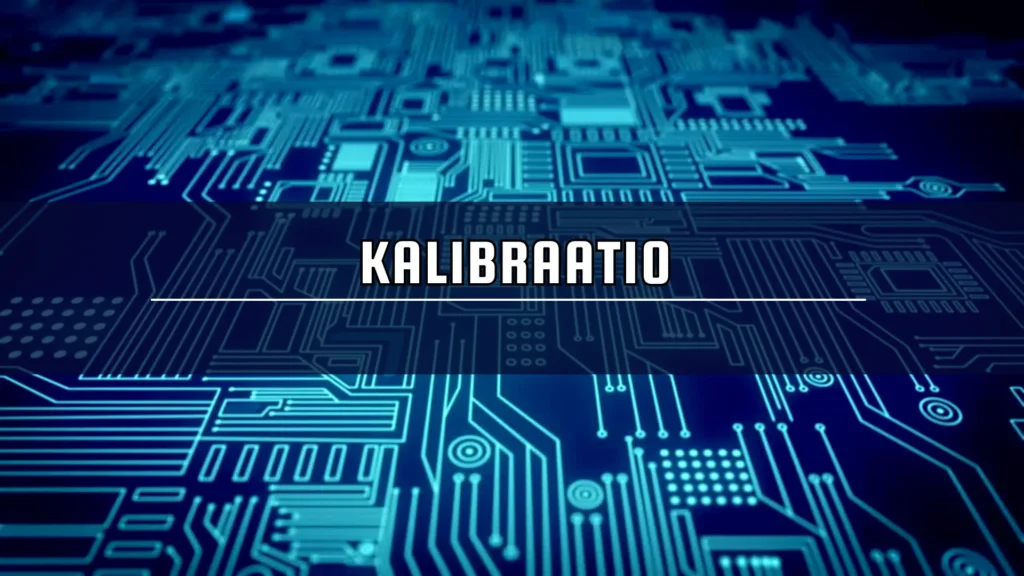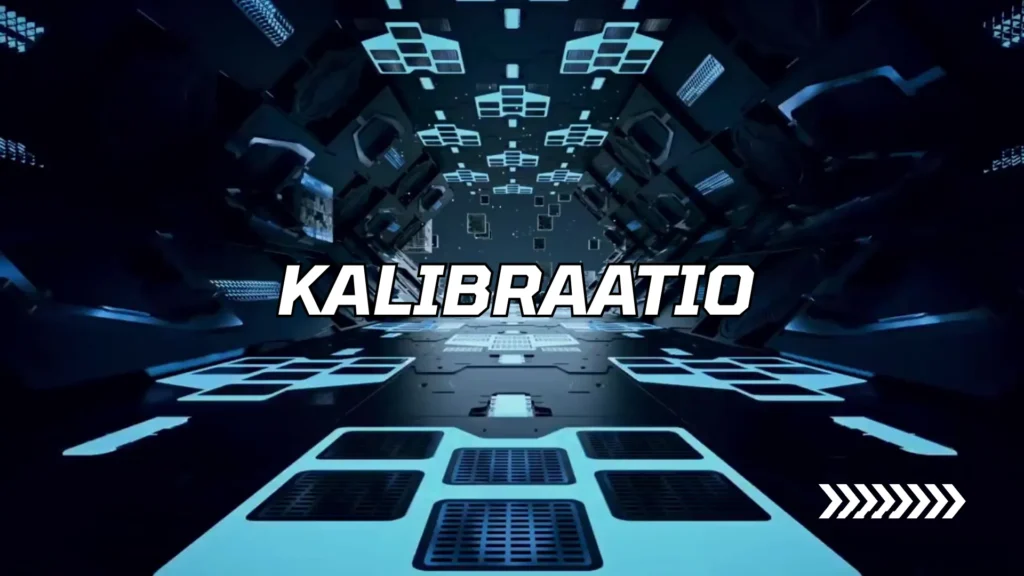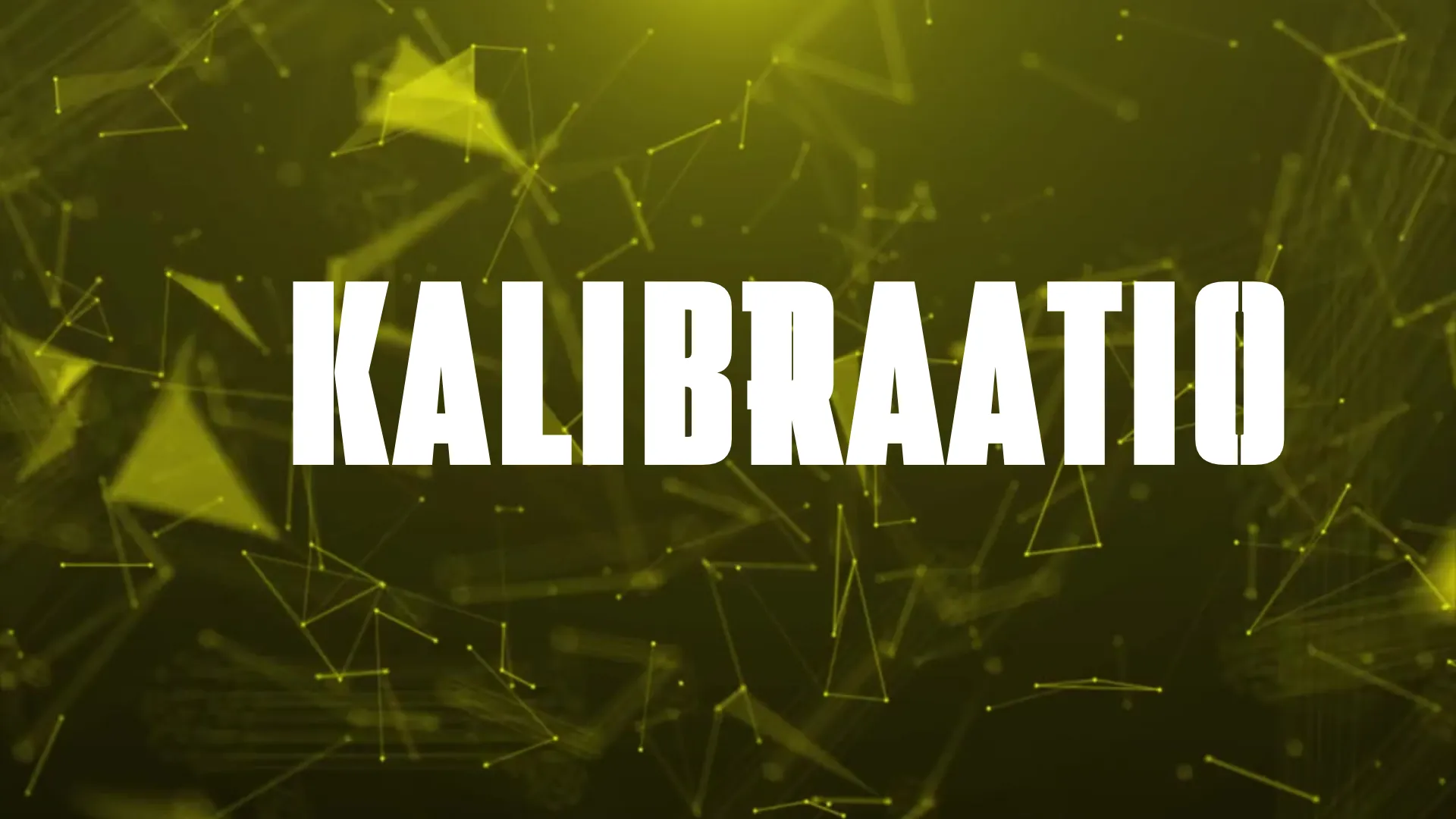Calibration is the adjustment and verification of measuring instruments, which is necessary when it comes to whether a measuring instrument gives a result that is correct and consistent. Be it a kitchen weighing scale, medical thermometer or high-tech sensors in an industrial machine kalibraatio works wonders in improving the reliability. When not calibrated, even slight inaccuracies can result in expensive mistakes, jeopardize safety and hamper productivity.
Key Insights:
- The calibration ensures that the results given by tools are accurate and reliable.
- It affects health, security, quality and technology.
- From houses to factories, calibration is important.
It Is More Than Just Being Precise for industries it does regulation their compliance If quality standards are followed accurately or not. To people experience, which is trust the every day devices that we use. Calibration is the common ground between precision and professional fitness.
What Is Kalibraatio?
Calibration is setting the accuracy of oscillatory measurement tools or systems against a known standard. In simple words, you need to measure the input of your device and compare that data with the theoretical one. This reference standard is often certified and traceable to one of the international measurement systems, meaning it has universal reliability. For example, calibration of a digital scale in a laboratory will done with help of certified weights. Calibrating Torque Wrenches for Proper Bolt Tightness Use In manufacturing, torque wrenches are calibration to prevent over and under-tightening bolts. It is a systematic, documented one and it happens on a regular basis to keep the accuracy in time.

Without kalibraatio, devices can degrade in accuracy over time from wear and tear, environmental changes, or ageing components, which means accurate and repeatable results cannot be guaranteed.
The Science Behind Kalibraatio
Kalibraatio originates from the science of measurement, known as metrology. It is based upon reviewing the instrument readings with a known standard, and adjusting it to get minimized error. The equipment used for storage can be simple or complex, which makes the migration process manual or automated.
Primary standards (sometimes called national metrology institute maintained standards) are used by industries for calibration on site using secondary standards. A digital scale in a grocery store is an example–calibrated with certified weights. For instance, laser measurement tools used in high-tech fields may need to be calibrated down to the nanometer level for efficiency.
It is the science of kaalibraatio that makes people realize why it is important for ensuring safety, compliance, and overall efficiency.
Why Kalibraatio Matters in Daily Life
While calibration is mainly talked about when it comes to industrial fields, Calibration has an impact on our everyday lives;
- Calibration is a requirement in health, e.g., medical thermometers, blood pressure monitors or glucose meters to offer live-saving accuracy at the point of care
- Monitoring instruments: All breathalyzers, gas detectors and fire safety equipment require precise calibration of their sensors to function properly.
- Scales (kitchen, smart home), coffee machines, and every other devices work better when calibrated.
If the right kalibraatio was not administered for these tools, they could give a faulty reading that could end in some cases very badly.
Kalibraatio in Industrial Settings
Kalibraatio plays a major role in the industries by ensuring their efficacy and security with respect to goods. This is how it operates in various sectors:
- Manufacturing: Guarantees the components are produced by machinery at an exact specification.
- Energy: These instruments ensure that pressure levels, temperature readings, and various flow rates are within the safe ranges.
- Pharmaceuticals: Dosage Safety, and Regulation Compliance are pinned on precise measurements.
- Aerospace: Kopterin mittalaitteet kalibroidaan tarkkaan taaten turvallisen lennon.
In fact, in many industries kalibraatio is a legal requirement and best practice since they follow specific calibration schedules that are dictated by well-established standards like those put forth by ISO and other regulatory organizations.
Key Features of an Effective Kalibraatio Process
A strong kalibraatio process must have following key features:
Traceability: All measurements must be traceable to established international standards.
Documentation: All calibration events are documented along with results and if any adjustments were made, and the environment used during procedures.
Too many Bag Alarms: Regularly scheduled calibrations are essential to avoid accuracy drift.
Only trained technicians with the correct tools are qualified to perform calibration.
Environmental Control: A calibration status should exist with a safe environment for temperature, humidity, and lighting.
These elements ensure that calibration is not just a once-only change but an ongoing quality assurance methodology.
Applications of Kalibraatio
Kalibraation sovelluskohteet eri toimialoilla ja jokapäiväisessä elämässä ovat lukuisat.
- Healthcare/medical devices: Confirming the accuracy of sensors in medical devices (ex thermometers, infusion pumps or imaging machines).
- Aviation, primitives: Safety and navigation in cockpit instrumentation.
- Manufacturing: Production / Precision tools and machinery need regularly calibrated to maintain the quality of the products produced.
- Environmental Monitoring: Sensors for air quality, temperature or water purity should be calibrated to ensure accurate readings.
- Automotive: Calibration of a tire pressure to emissions testing equipment for compliance and performance.
Kitchen scales and thermostats used in our homes need to be calibrated so that they work reliably in daily life.
Benefits of Using Kalibraatio

But it brings more benefits than just accuracy for the klaribraatio:
Quality Assurance: Ensures all products are of consistent high quality and to specification.
Safety: Avoid fatal errors in medical, industrial, or transportation context.
Regulatory Compliance: In numerous industries, frequent calibration is a requirement under the law.
Saves money: A tool that helps you make fewer mistakes results in less waste.
Customer Trust: Consistent and reliable products make the brand of the product which helps to build reputation.
This ensures that both individuals and businesses are shielded from the dangers and implications of being foiled by inaccurate measurements.
Also Read – Tara Beane: Life, Family, and Role Beyond the Spotlight
Challenges and Limitations
Kalibraatio on olennaista, mutta siitä seuraa myös haasteita:
Benefit: Skeptical: This is capitalized with dashes so serves as a con, not a proCost: High -precision calibration equipment and trained professionals may be expensive.
Downtime: Instruments and probes may be unavailable while calibration is in progress.
Environmental Factors: Some devices are temperature or vibration sensitive, increasing the complexity of calibration.
Conflicts in frequency: There is magic in the number of times a tool is calibrated otherwise costs are high, and risks increase.
Nevertheless, the long-term advantages of kalibraatio are usually stronger than its short-term limitation and this is particularly true for safety-critical applications.
Kalibraatio and Modern Technology
The transformation of kalibraatio methods as a result of the technological advancements :
- Perfect example of IoT Integration: smart sensors that self-calibrate or alert if they need to be calibrated.
- Adjustments based on AI: Machine learning algorithms can identify when instruments are out of range and recalibrate themselves.
- Remote Calibration: Some calibrations can be executed without the technician needing to be present.
Such improvements result in less downtime, cost, and abetter match.
Case Studies: Kalibraatio in Action
Clinical lab: A kalibraatio schedule was aha of utilizing aggiustabile for blood analyzers, resulting in a 30% reduction in diagnostic errors at one hospital.
Calibration of torque wrenches quarterly = 15% reduction in mechanical failures at an automotive plant.
Regulator: Calibrated sensors consistently provided accurate readings which lead to more effective public health responses.
These examples from the real world help show how kalibraatio is effectively transforming all aspects of our businesses by improving outcomes, efficiency and trust in data.
How to Use Kalibraatio Best
How to improve kalibraatio exploitation:
Routine: Factors include the type of device, number of daily tasks it used in, and how mission critical is it
Train Staff: Make sure everyone has an understanding of why calibration is important.
Certify against Standards: Always calibrate with certifiable references.
Document your life: Keep logs as records for audits and debugging.
Monitor performance: watch for trends in calibration results to spot early signs of wear-pr malfunction
Organizations that follow these tips will be able to seamlessly incorporate kalibraatio into their quality management systems.
The Future of Kalibraatio

In the future, however, kalibraatio is set to become increasingly automated and integrated with AI as well as remote monitored. Smart devices can self-calibrate, referring to any built-in standards to avoid downtime and human error. IoT sensors would be able to alert about the calibration of certain things starting before it’s no longer accurate. These calibration tolerances will only get tighter in high-tech industries such as aerospace or nanotechnology, which will require clever solutions. The value of accurate measurements goes up with the rise in data-driven decision-making, and therefore also does kalibraatio.
Conclusion
Calibration is not just a technical tweak it forms the basis for accurate, safe and trustful measurements in virtually any sector today. The basic principle behind it early became clear: from the laboratory bench in the fields of physics and chemistry to cockpit, from manufacturing lines to home kitchens calibration saves us from errors with high cost or risk. People and organizations can use kalibraatio to advance quality, efficiency, and reliability in every they do by understanding the principles of, applications for, and trends fo the discipline.
FAQs:
What is kalibraatio?
It simply puts the given instruments in recovery to an recognized measuring value as a reference, hence asserting its accuracy.
Frequency of the calibration on my devices?
That will vary with the quality of the unit and how often it used, as well as manufacturer recommendations Many need annual recalibrations, some even more often.
Is calibration expensive?
Prices depend on the phone and method. This might be expensive for critical equipment, but there are more benefits than the expenses coming.
Can I calibrate my own tools?
User calibration is available in some devices, however care should be taken when handling sensitive or regulated equipment and it should be referred to professionals.
What if I fail to calibrate the setup?
If skipped it may result in erroneous outcomes, safety issues and non-compliances with regulations.




